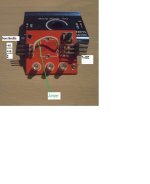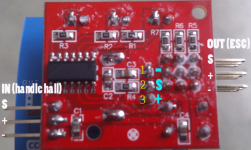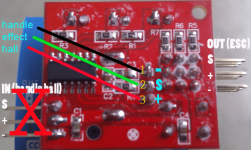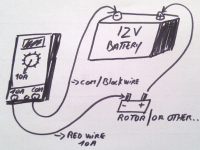parabellum
1 MW
kejanostra said:Hello Parabellum, before welding the wire, and burning out the servo tester!
To see on picture, the rear view of the card servo tester, because I hesitate between 1 or 2(middle),
to weld the wire jumper on brooch "Signal" IN, in 1 or 2 of the potentiometer.
I know that it is necessary to delete the button potentiometer, you worry not.
Here is the tread:
http://endless-sphere.com/forums/viewtopic.php?f=28&t=12196&start=15#p313413
Here is the corrupt picture you can not see any more:
Your Servotester works same way, I modified 1 of those as yours, just to lazy to stand up and make a picture.





